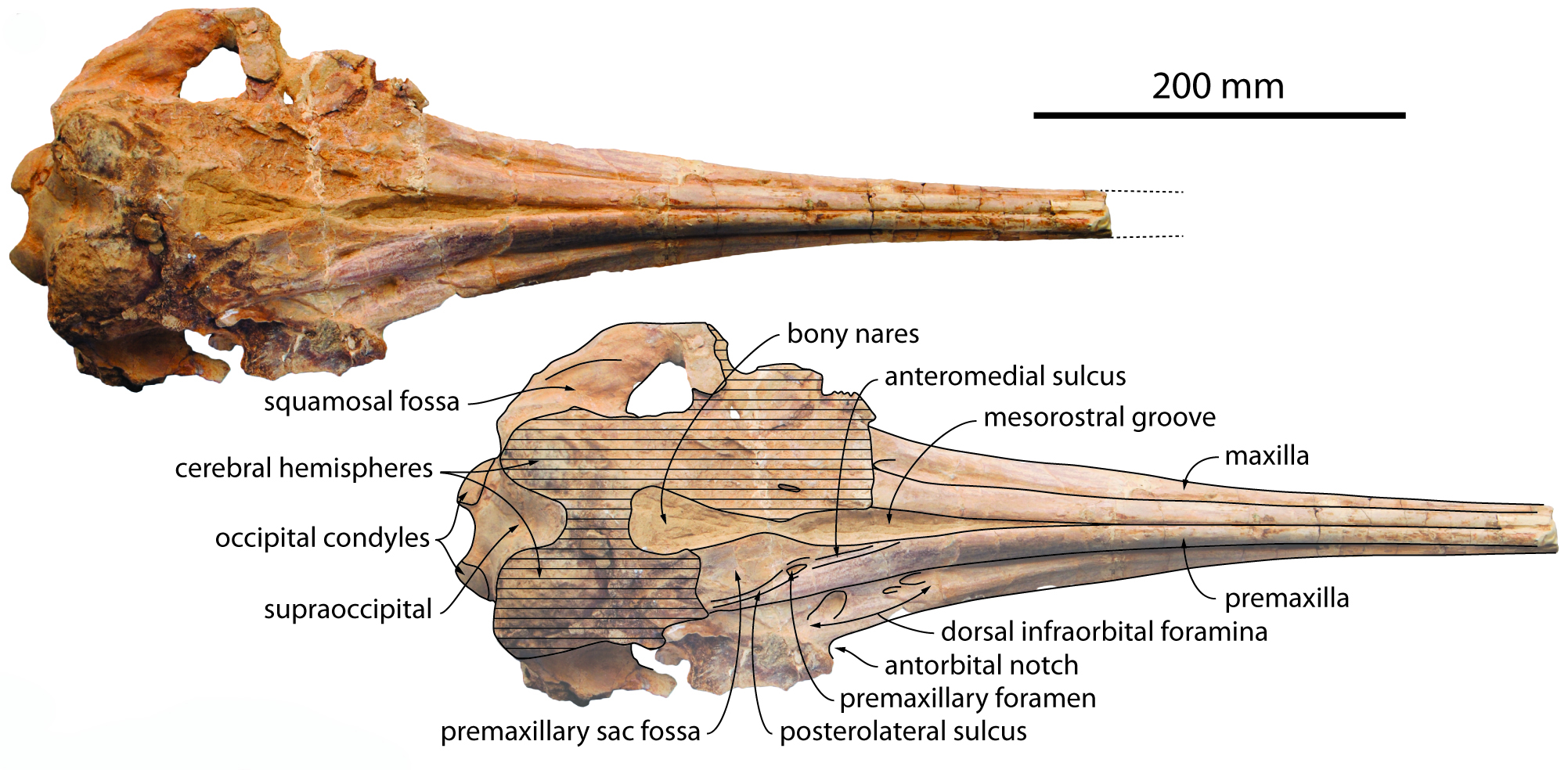EURHINODELPHINIDS FROM THE EARLY MIOCENE OF PERU: FIRST UNAMBIGUOUS RECORDS OF THESE HYPER-LONGIROSTRINE DOLPHINS OUTSIDE THE NORTH ATLANTIC REALM
DOI:
https://doi.org/10.13130/2039-4942/15124Keywords:
Cetacea; Odontoceti; Eurhinodelphinidae; Chilcatay Formation; Burdigalian; southeastern Pacific.Abstract
Among the many hyper-longirostrine dolphins (Odontoceti) from the Miocene, members of the family Eurhinodelphinidae bear two highly distinctive cranial features: a long and edentulous premaxillary portion of the rostrum and a mandible that is significantly shorter than the rostrum. Until now, unambiguously attributed members of this clade were only recorded from early to middle Miocene deposits of the North Atlantic realm (east coast U.S.A., North Sea Basin, and Mediterranean). In this work we describe and compare two partial skulls of longirostrine dolphins from late early Miocene (Burdigalian, 19.25-18 Ma) marine deposits of the Chilcatay Formation, in the East Pisco Basin (southern coast of Peru), preserving rostral and mandibular material, as well as ear bones. Based on these specimens we report diagnostic remains attributable to this family for the first time for the whole Southern Hemisphere and the whole Pacific Ocean. This major expansion of eurhinodelphinids' palaeogeographic distribution contrasts with their proposed shallow-water, coastal environments; it suggests a new dispersal route for members of the family across the Central American Seaway; and it further highlights the similarities between the odontocete faunas of the southeastern Pacific and North Atlantic realm during the Miocene. Better-preserved eurhinodelphinid specimens from the odontocete-rich Chilcatay Formation will allow for a more detailed comparison with North Atlantic members of the family.

Downloads
Additional Files
Published
Issue
Section
License
The journal allow the author(s) to hold the copyright without restrictions.






